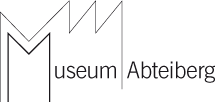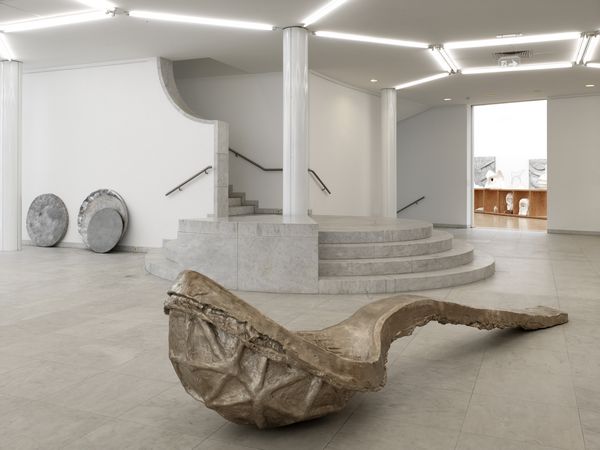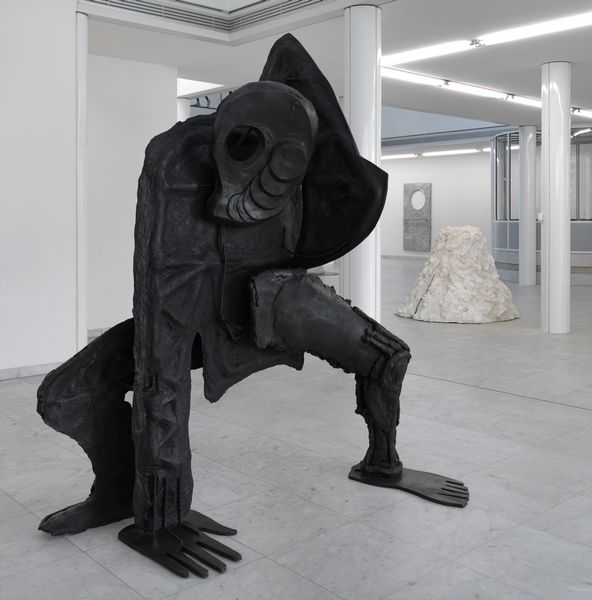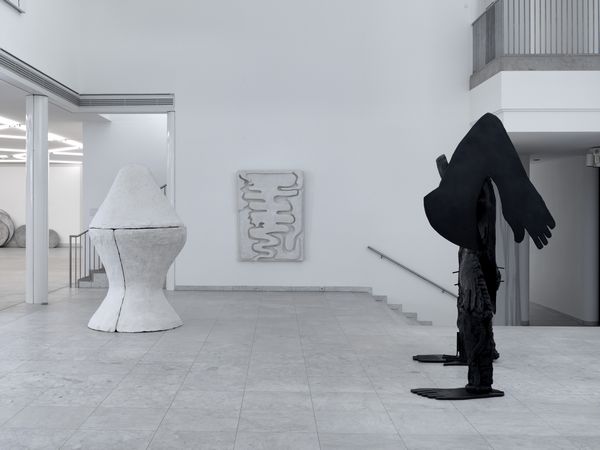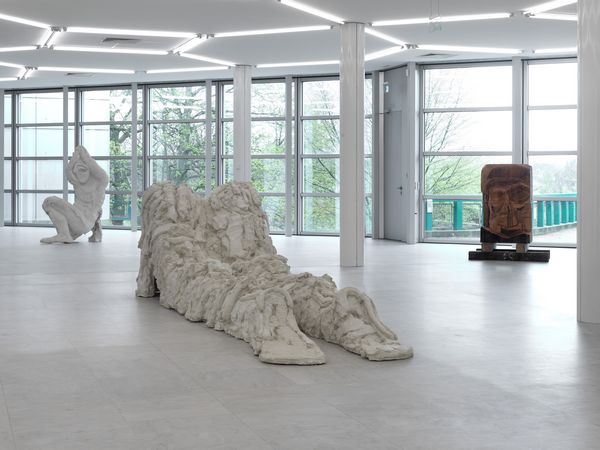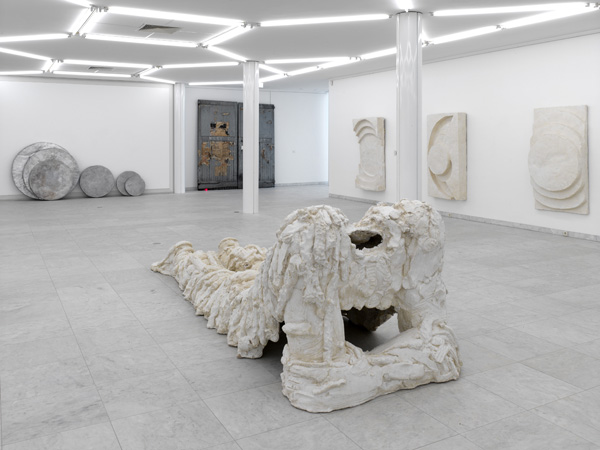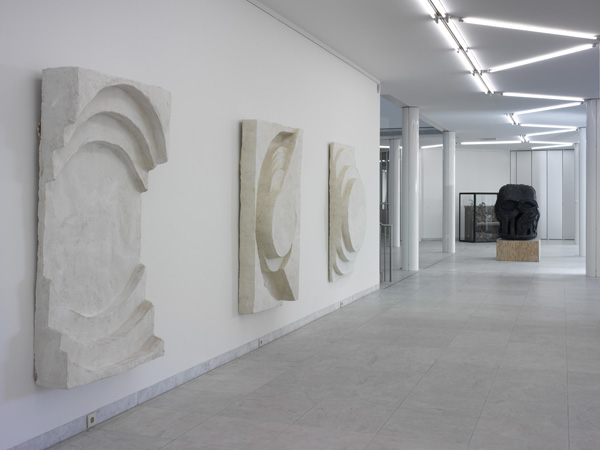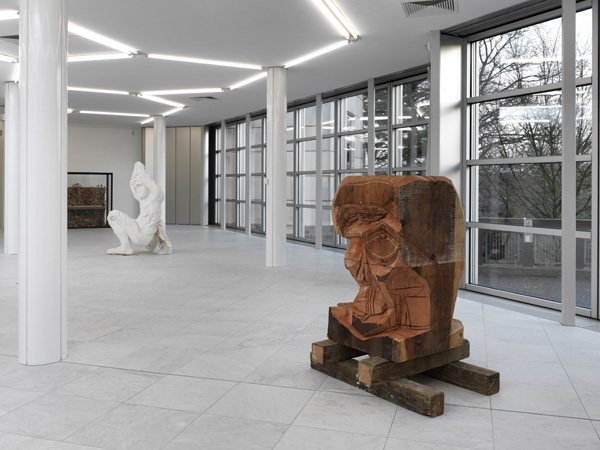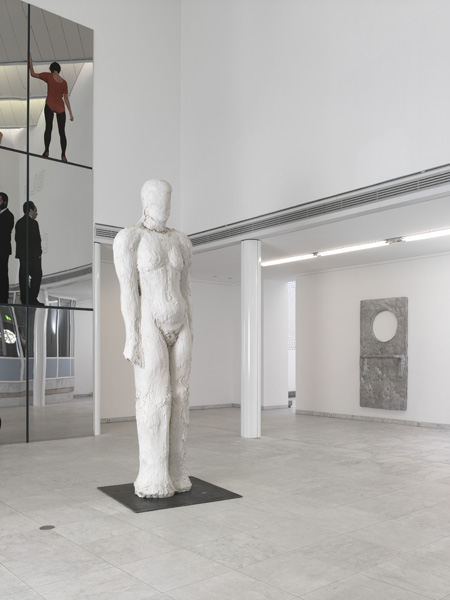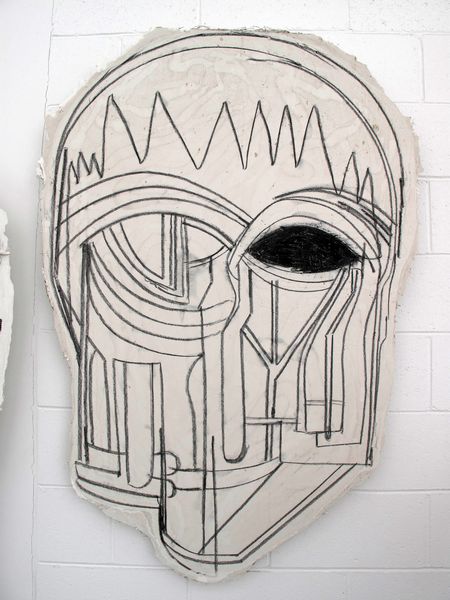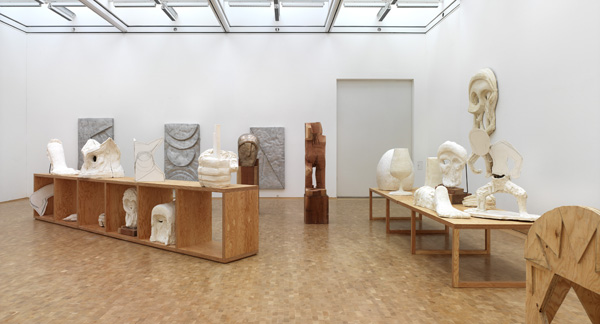Thomas Houseago (b. 1972 in Leeds, lives and works in Los Angeles) is currently one of the most frequently discussed sculptors of the younger generation. His works demonstrate a new approach to sculptural figuration. Houseago presents an astonishingly sensuous, almost archaic materiality, which incorporates the effects of past and now apparently no longer feasible sculptural motifs: tableau, statue and torso, antique and modern allegories of humans, gods and creatures.
Houseago risks the irritating effect of these recurring bodies and an art historical force whose seriousness and grandeur recall the former urge to develop a modern image of what it is to be human. That tradition is particularly evident in Houseago’s native Britain – in the memory of the anthropomorphous abstractions of Jacob Epstein or Henry Moore. Houseago’s sculptures do not replicate heroic or spiritual physical forms, however, but transform them into fictionality and stage-like drama. His works are contemporary, since they are fantasy too. They operate with fantastic and mythical concepts, which are at times also derived from the digital world of plastic and, indeed, inspired by it. Yet Houseago’s works are, above all, prior to all these associations and to every image or depiction, very sketch-like and graphic creations. Their scenic construction is especially characteristic: Houseago’s sculptures are often supernaturally large, yet hollow and open, the carnality of heroes breaking off in flat surfaces, their limbs attached only coarsely like prostheses. White gypsum, raw wood, core iron structures and carbon pencil are always the base materials, followed by sculptural cast techniques which, due to new processes, are often similarly fragile, sketch-like and colourless. They are bronze, but yet almost inscrutable beneath whitish chalky or contrasting negative back patina surfaces.
Thomas Houseago studied at Saint Martins College of Art and Design in London, then at De Ateliers in Amsterdam, where he had such contrasting tutors as Stanley Brouwn, Georg Herold or Thomas Schütte. He then lived for several years in Brussels. Houseago exhibited early at Stedelijk Museum Bureau Amsterdam (1996) and SMAK Gent (2003), the resonance was disillusioning. In 2003 Houseago emigrated to Los Angeles. Around 2006 a successful series of exhibitions started, which mage his work known in the US and Europe. IN 2010 he participated in the Whitney Biennal in New York City.
The exhibition at Museum Abteiberg is the artist’s first large presentation in Germany and his biggest exhibition to date. For the project Houseago worked on a series of scultural figures and abstract panels. He speaks of a utopian vision, staged on the marble surface and the white neon light of the exhibition spaces. Houseago also shows early sculptures from his studio time in Brussels, some of which have never been exhibited before.
The exhibition was arranged in cooperation with Modern Art Oxford and the Centre international d’art et du paysage de l’île de Vassivière, France. The artist’s first monograph will be published in the context of the exhibition series (May 2011, Modern Art Oxford) as will a documentary exhibition publication on the projects in Mönchengladbach and Vassivière (summer 2011).
Press conference with Thomas Houseago:
